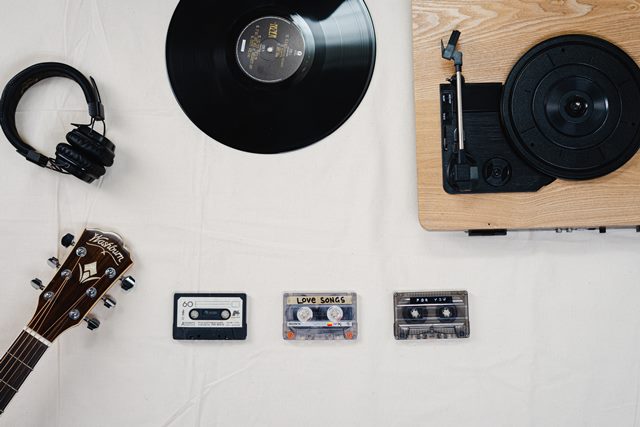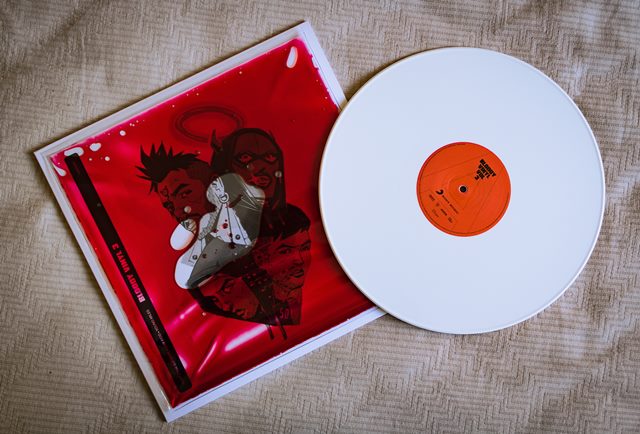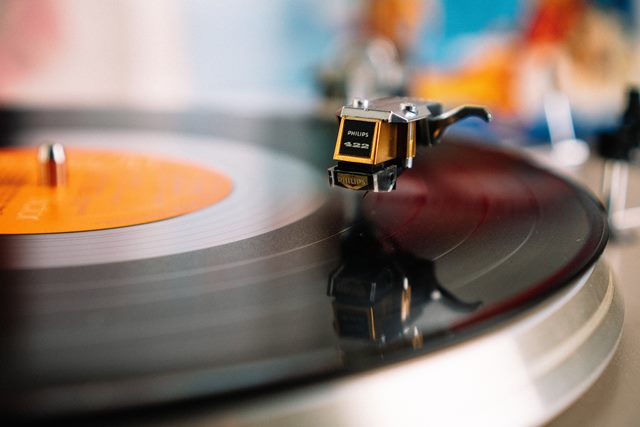Music is a universal language that evokes emotions, inspires, and brings people together. But have you ever wondered about the different types of musical projects and what sets them apart? From the beloved mixtape to the sudden EP, or the highly anticipated album, the music industry has a variety of formats for artists to share their creativity with the world.
In this article, we’ll dive into the key differences between a mixtape, EP, and album.
So, whether you’re a die-hard music fan or a casual listener, get ready to learn about the nuances of music projects and how they shape the listening experience.

Mixtape
A mixtape is a collection of songs an artist or DJ compiles, often featuring original music, remixes, and covers.
Unlike an album or EP, a mixtape is typically free to download. It is also distributed through various platforms, such as SoundCloud or DatPiff. They are often used as a way for artists to build their fan base and create buzz around their music.
The History of Mixtapes
The origins of mixtapes can be traced back to the 1970s and 1980s. DJs would create compilations of their favorite tracks and distribute them to their audience. These mixtapes were made by recording tracks onto cassette tapes and were popular in the hip-hop and dance music scenes.
In the 1990s, mixtapes became more popular and widespread, especially in the hip-hop community. They were a way for emerging artists to share their music and get their names out there. Established artists also used mixtapes as a way to release new material that didn’t fit into their album projects.

Innovative Tech Solutions, Tailored for You
Our leading tech firm crafts custom software, web & mobile apps, designed with your unique needs in mind. Elevate your business with cutting-edge solutions no one else can offer.
Start NowIn the 2000s, mixtapes exploded in popularity with the advent of the internet and digital music. Platforms such as DatPiff and LiveMixtapes made it easy for artists to distribute their music online and reach a wider audience.
Mixtapes allowed artists to showcase their versatility, experiment with new sounds, and build a loyal fan base.
Read: How to Distribute Your Song to Digital Service Providers
Characteristics of Mixtapes
A mixtape has several characteristics that set it apart from other formats, such as an EP or album. Here are some of the key features of mixtapes:
- Free: Mixtapes are typically available for free download or streaming, making them accessible to a wide audience. This has helped to make mixtapes a popular way for artists to build their fan base, plus other advantages.
- Variety: Mixtapes often feature a variety of styles and genres, ranging from original tracks to remixes and covers. This allows artists to showcase their versatility and experiment with different sounds.
- Guest features: Mixtapes often feature guest appearances from other artists, which can help to expand the artist’s fan base and introduce them to new audiences.
- No label constraints: Mixtapes are not typically released through a label, meaning that artists have more creative freedom and can experiment with new sounds and styles without pressure to meet commercial expectations.
- Loose structure: Unlike an album or EP, a mixtape doesn’t necessarily follow a strict structure or concept. This allows artists to be more spontaneous and creative with their music.
Extended Play (EP)

An extended play or EP is a musical project that contains more songs than a single but fewer than a full-length album or mixtape.
Typically, an EP contains between three and six tracks, although there are no hard and fast rules. EPs are often used as a way for artistes to showcase their versatility and creativity. Artistes may also use EPS to test the waters before committing to a full-length album.
The History of EPs
The history of EPs can be traced back to the 1950s when vinyl records became the dominant format for music. At the time, singles were the most popular format. But record labels wanted to offer something more substantial to their customers.
Thus, the EP was born.
Initially, EPs were used to compile multiple singles onto one record, but they soon evolved into their own format.
In the 1960s and 1970s, EPs became popular with punk and indie bands as a way to release music independently without the backing of a major label.

EPs were often sold at shows or through independent record stores and helped to launch the careers of many now-famous artists.
Seamless API Connectivity for Next-Level Integration
Unlock limitless possibilities by connecting your systems with a custom API built to perform flawlessly. Stand apart with our solutions that others simply can’t offer.
Get StartedIn the digital age, EPs have become more popular than ever. With the rise of streaming services, artists can release music more frequently and flexibly. EPs have become a way for artists to test out new sounds, experiment with different genres, and build a fan base before releasing a full-length album.
How an EP Differs from an Album or Mixtape
EPs have several characteristics that set them apart from other musical formats, such as singles and albums. Here are some of the key features of EPs:
- Length: EPs typically contain between three and six tracks, although there are no hard and fast rules.
- Versatility: EPs allow artists to experiment with different genres and sounds without committing to a full-length album.
- Focus: EPs often have a specific focus or theme, such as a concept or a particular sound.
- Cost: EPs are often less expensive to produce than full-length albums, which makes them a more accessible format for independent artists.
- Marketing: EPs can be used as a way to build buzz and create anticipation for a full-length album.
Albums

An album is a collection of songs that are released together as a single body of work. Albums typically contain between eight and fifteen tracks, although there are no hard and fast rules.
This makes an album longer than an EP with a different format to a mixtape. In addition, the tracks on an album are often arranged in a specific order to create a narrative or convey a particular message.
How Albums Came to Be
The history of albums can be traced back to the 1940s. At the time, records were sold as singles or collections of singles, but record labels soon realized that they could make more money by releasing full-length albums.
In the 1960s and 1970s, albums became a way for artists to express their creativity and push the boundaries of what was possible with music. Albums like Sgt. Pepper’s Lonely Hearts Club Band by The Beatles and Pet Sounds by The Beach Boys became iconic works that inspired generations of musicians.
In the digital age, albums have continued to evolve. With the rise of streaming services, artists can release music more frequently and with greater flexibility. However, the album remains a cornerstone of the music industry and a format that many artists aspire to.
Characteristics of Albums
Albums have several characteristics that set them apart from other musical formats, such as singles and EPs. Here are some of the key features of albums:

Transform Business with Custom CRM & ERP Solutions
Elevate your operations with a CRM or ERP tailored for you. Let’s build the perfect solution that others can't replicate—crafted to match your business's needs like no other.
Get Started- Length: Albums typically contain between eight and fifteen tracks, although there are no hard and fast rules.
- Concept: Besides length, albums often have a specific concept or theme that runs through the tracks. For example, it could be a narrative or a particular sound.
- Cohesion: Albums are often designed to be listened to as a single body of work, with the tracks arranged in a specific order to create a cohesive listening experience.
- Variety: Albums allow artists to showcase their versatility and range, with tracks that span different genres and styles.
Benefits of Albums
Albums offer several benefits to both artists and fans. Here are some of the advantages of releasing an album:
- Creative Expression: Albums allow artists to express their creativity and push the boundaries of what is possible with music.
- Fan Engagement: Albums offer fans a deeper connection to an artist’s music, with tracks that can be explored and analyzed over time.
- Commercial Success: Albums are often more commercially successful than other musical formats, which can help to build an artist’s career and reputation.
- Legacy: Iconic albums can have a lasting impact on the music industry and inspire future generations of artists.
Differences Between a Mixtape, EP, and an Album
A mixtape, EP, and album are all different formats for releasing music. Each has its own characteristics and benefits. Here are the main differences between the three:

- Length: Mixtapes are typically shorter than albums, containing between three to twelve tracks, while EPs are usually longer than mixtapes but shorter than albums, containing between four to seven tracks. Albums are the longest of the three, containing an average of eight to fifteen tracks.
- Purpose: Mixtapes often showcase an artist’s skills or build buzz around an upcoming project. EPs can be used to experiment with different sounds and styles or as a bridge between mixtapes and albums. Albums are usually the main body of work that an artist releases and are intended to be a cohesive listening experience.
- Commercial Success: Mixtapes are typically given away for free or sold at a lower price point than albums. EPs are often priced lower than albums, but they can still generate revenue for the artiste. Albums are typically the most commercially successful of the three formats, with higher sales and chart positions.
- Flexibility: Mixtapes offer artistes more flexibility in terms of the sounds and styles they can experiment with, as commercial considerations do not constrain them. EPs allow for some experimentation but still need to maintain some coherence. Albums require a greater degree of coherence and consistency to provide a unified listening experience.
- Fan Engagement: Lastly, mixtapes and EPs can help artistes to build a fan base and create buzz around their music, as they are often released between albums. Albums offer fans a deeper connection to an artiste’s music, with tracks that can be explored and analyzed over time.
Before you go…
Hey, thank you for reading this blog to the end. I hope it was helpful. Let me tell you a little bit about Nicholas Idoko Technologies. We help businesses and companies build an online presence by developing web, mobile, desktop, and blockchain applications.
We also help aspiring software developers and programmers learn the skills they need to have a successful career. Take your first step to become a programming boss by joining our Learn To Code academy today!











